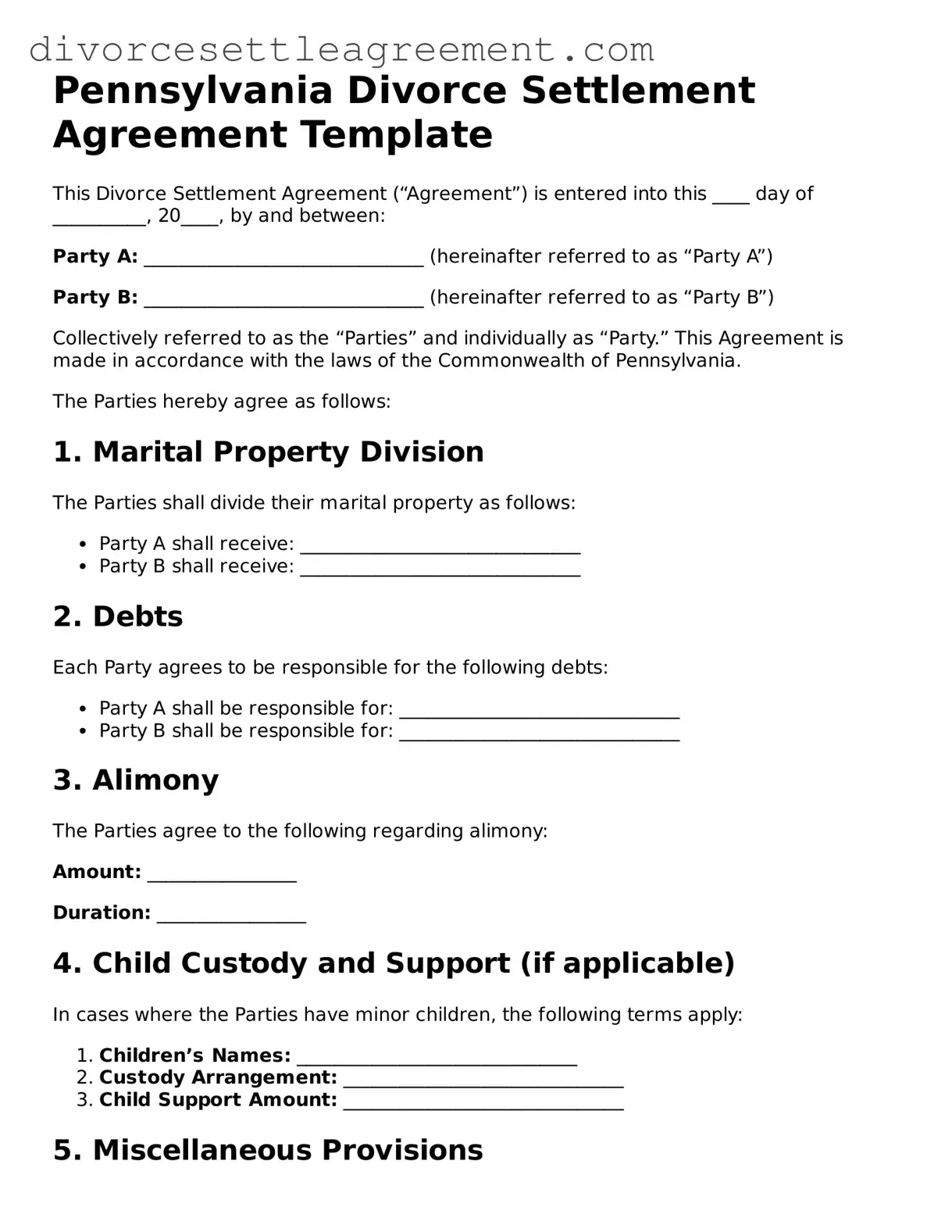What is a Pennsylvania Divorce Settlement Agreement?
A Pennsylvania Divorce Settlement Agreement is a legal document that outlines the terms agreed upon by both spouses during a divorce. This agreement addresses issues such as property division, child custody, child support, and spousal support. It serves to finalize the divorce process and ensures that both parties understand their rights and obligations.
Who needs to complete a Divorce Settlement Agreement?
Both spouses must complete a Divorce Settlement Agreement if they wish to resolve their divorce amicably and without court intervention. This document is particularly important for couples who have children or shared assets, as it provides clarity and structure to the divorce terms.
Is a Divorce Settlement Agreement legally binding?
Yes, once both parties sign the Divorce Settlement Agreement, it becomes legally binding. This means that both spouses are obligated to adhere to the terms outlined in the agreement. If one party fails to comply, the other party may seek legal recourse to enforce the agreement.
Can the terms of the Divorce Settlement Agreement be modified?
Yes, the terms can be modified, but both parties must agree to any changes. If circumstances change significantly, such as a job loss or relocation, either party can request a modification. It is advisable to document any changes formally to avoid future disputes.
What happens if we cannot agree on the terms?
If both parties cannot reach an agreement, they may need to go to court. A judge will then make decisions regarding the contested issues, which may not reflect either party's preferences. Mediation is often recommended as a way to facilitate discussions and reach a compromise before court involvement.
Do I need a lawyer to create a Divorce Settlement Agreement?
While it is not legally required to have a lawyer, it is highly recommended. A lawyer can provide valuable guidance, ensure that the agreement complies with Pennsylvania law, and help protect your interests. If both parties are in agreement, they may choose to draft the document without legal representation, but this can be risky.
How long does it take to finalize a Divorce Settlement Agreement?
The time it takes to finalize a Divorce Settlement Agreement varies depending on the complexity of the issues and the willingness of both parties to negotiate. If both spouses are cooperative, it may take a few weeks. However, if disputes arise, the process could extend to several months.
What should be included in a Divorce Settlement Agreement?
A comprehensive Divorce Settlement Agreement should include details on asset division, debt responsibilities, child custody arrangements, child support obligations, and any spousal support. It should also outline how future disputes will be resolved and any other relevant terms agreed upon by both parties.
Where do I file the Divorce Settlement Agreement?
The Divorce Settlement Agreement must be filed with the court where the divorce is being processed. In Pennsylvania, this is typically the Court of Common Pleas in the county where either spouse resides. Ensure that you keep a copy for your records.
What if one spouse refuses to sign the Divorce Settlement Agreement?
If one spouse refuses to sign, the other may need to seek legal advice. It may be necessary to go through mediation or court proceedings to resolve the outstanding issues. A judge can ultimately decide on the terms if an agreement cannot be reached.
